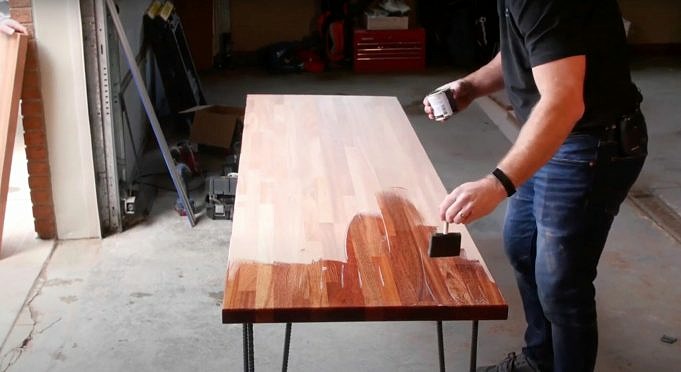6 Best Woods For A Desktop And A Guide To Buying
Share it
Although crafting desks might seem simple, it is not. Did you know that the quality of your desks is directly related to the wood used? Here’s a list that we put together to help you choose the right wood for your project.
Six Types Of Wood You Can Use For Your Desktop
Maple
Maple wood is a beautiful wood with beautiful graining and density. This makes it a popular choice for woodworkers when creating desktops. Our DIY experts are confident that furniture made from this hardwood will withstand all kinds of weather conditions and be durable.
Birch
Birch is a lighter-colored lumber you can use to stain your DIY desk. This wood is well-known for its high density so it’s not surprising that many woodworkers prefer it when working with furniture.
MDF
Medium Density Fiberboard is often compared with plywood. However, it’s more stable and has a higher density. If you intend to use MDF desktops, we recommend keeping them at 20mm thickness.
: Walnut
Walnut furniture is difficult to use because of its changing color over time. The grain remains consistent over time, however. It has a straight pattern and slightly open grain that give it a classic look, which is great for many interior designs.
: Oak
You will find two types of oak material when you shop for it. Red oak is darker than white oak, while white oak is lighter. This is the main difference between them. Both wood pieces absorb stain quite well.
Reclaimed Wood
If you are looking for rustic wood desks, reclaimed wood is a good option. Although some people call it « scrap wood » from old factories and barns, our woodworkers will assure you that they are harder than freshly cut lumber.
A Guide To Choosing A Desktop Wood
Hardness And Density
We recommend hardwood when choosing the right wood for your desktop or for home use. Although it may sound generic, hardwood lumber is less likely to decay than woods of a lower density. They are also more suitable for long-term wear and tear.
Color And Texture
Good wood texture and color are hampered by the changing appearance of the lumber. Walnut woods are a good example. While these options may fade in color over time, the patterns and textures they create are stunning.
We recommend that you examine the changes in wood grain over time, depending on what aesthetic you are trying to achieve. Our expert opinion is that uniform graining is best.
The Wood’s Moisture Content
This is something that most DIYers don’t know, but it is important to verify the wood’s moisture content. These factors can greatly affect the size and shape changes of lumber. You can test it by simply weighing it and drying it to determine the impact of harsh conditions.
Make Your DIY Desktop
Secure The Joint
Any skilled woodworker will ensure that the joints are secured to make the desktop strong and durable. These features will ensure that your table is stable and not wobbly. Our team recommends that you use binders, adhesives or fasteners.
Finishing The Wood
A finishing beeswaxi is a good option for wood materials. It doesn’t matter if you apply a clear coat or a wood stain to your desk. As long as the color matches your style, it is your choice.
Products to Check:



